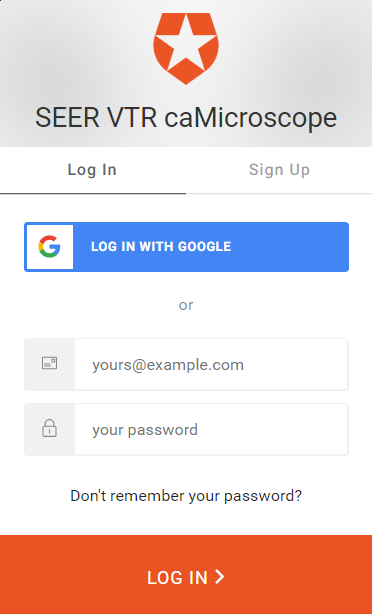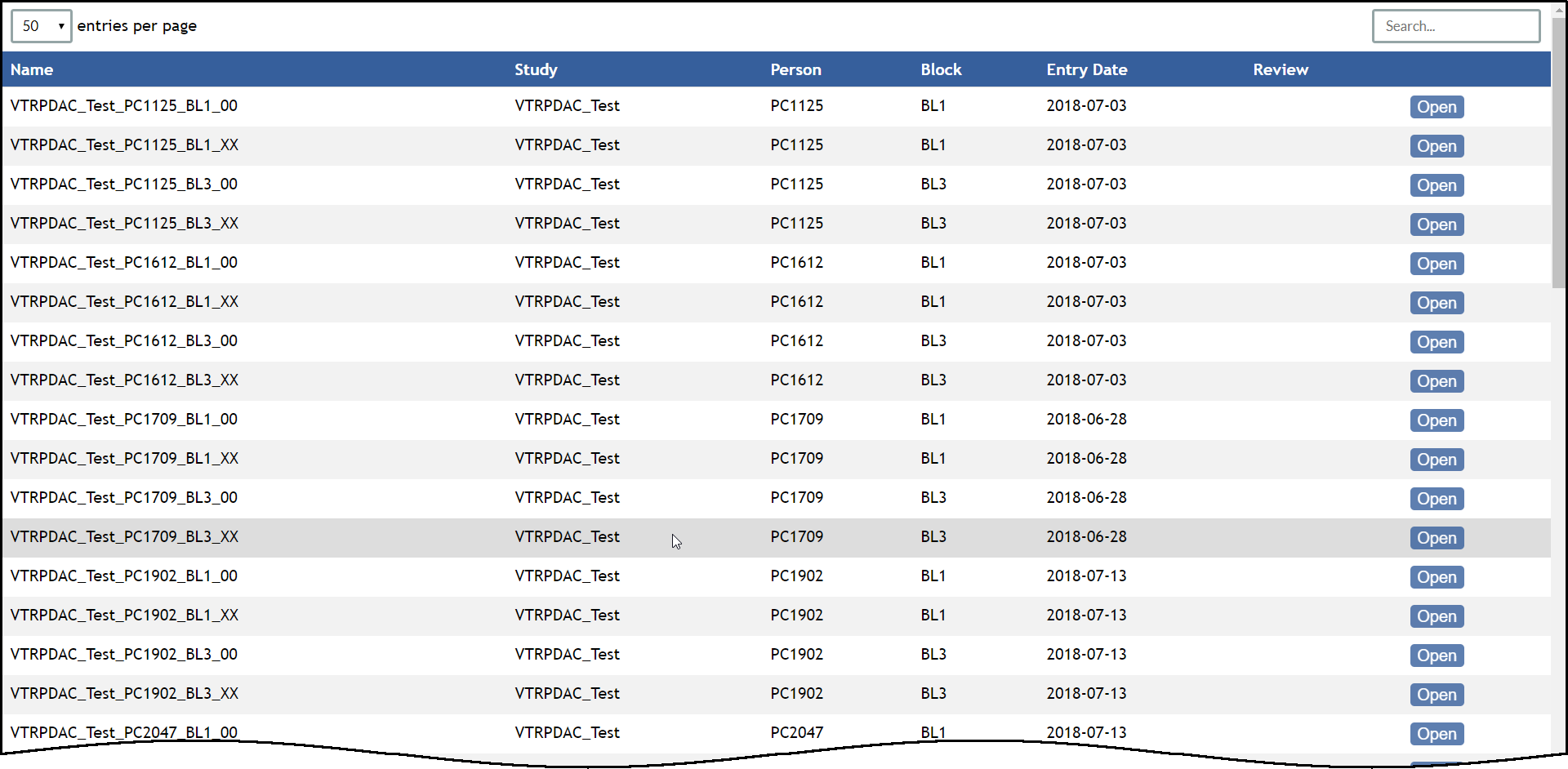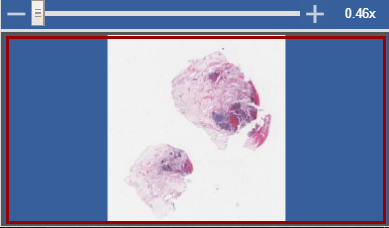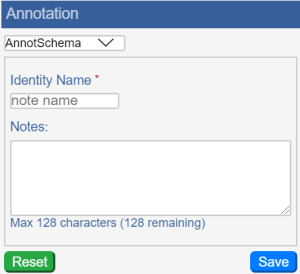caMicroscope is a tool to view, annotate, and analyze whole-slide, biomedical images. It manages digital pathology images, associated clinical and imaging metadata, and human/machine generated annotations and markups. It also allows you to view and analyze nuclear segmentations of images.
This guide explains how to do the following tasks in caMicroscope:
Opening caMicroscope
- Use the Chrome browser to navigate to caMicroscope.
The Sign In page appears. - Use your Google credentials to sign in to caMicroscope.
The caMicroscope site appears. - Select one of the image databases by clicking either the large slide image or the More button. Options include the Breast Cancer Genomic Pilot, Virtual Tissue Repository (VTR) Pending Slides, and Pancreatic Ductal Adenocarcinoma (PDAC).
A table appears that lists all whole-slide images for the selected database that you are authorized to view. In the table, click the Open button for any row.
The slide opens in caMicroscope.To select a different image, click in the caMicroscope toolbar or the back arrow in your browser to return to the table.
Panning the Slide
Panning allows you to move the image inside the window.
- Select an image and view it in caMicroscope.
- In the inset window, note the red bounding box. This bounding box is your view of the current image in the main content window.
- Drag your mouse along the main content window. The red bounding box moves to reflect your current position.
Zooming In and Out
The inset window has a zoom slider above it.
- To zoom in on the image, move the slider towards the plus sign.
- To zoom out, move the slider in the inset window towards the minus sign.
As the slider moves, the main content window zooms in or out and the red bounding box in the inset window changes to show how much of the total image is in the main content window.
Using the caMicroscope Tools
Use the toolbar buttons to manipulate the slide. To close any toolbar button, click the same button again or a new button.
Tool | Name | Purpose |
Annotations | Opens the Annotations panel, where you can select which annotation set to view, name that annotation set, add optional notes about the annotation set, save the annotation set, and reset the panel to its original state. | |
Layer Manager | Opens the Layers Manager panel, where you can select which layers to view. | |
Home | Return to the data table so that you can open another slide. | |
Draw | Draw thin lines, thick lines, or polygons on the image. To maintain the integrity of measurements, avoid drawing shapes that overlap or intersect one another. | |
| Magnifier | The Magnifier works like a magnifying glass and allows you to see the slide at normal magnification (1.0), low magnification (0.5), or high magnification (2.0). Click a magnification level and place the bounding box on the area of the slide you want to magnify. | |
| Measurement | Drag this tool on the slide to learn the measurement in micrometers. | |
| Share View | Opens a window with a URL to the current presentation state of the slide including the magnification level, layers that are currently open, and your position on the image. | |
| Side by Side Viewer | Shows the Layer Manager panel, the left and right layers, and inset window. For the right and left layer, select which layer you want to view. | |
| Heat Map | For a slide with heatmap data, opens the choices of heatmaps available, as well as ways of displaying the heatmaps. The gradient shows all of the values on the selected spectrum for the field you selected. | |
| Labeling | Use this tool to draw a circle or shape around a tumor region, measure an area on the slide, download labels that exist | |
| Segment | ||
| Bug Report | Opens a Google Form where you can describe the issue you have experienced. | |
| Reviewed | Click this button after reviewing a slide to change its review status, then confirm the change. A green checkmark appears in the data table for this slide after you have marked it as reviewed. |







